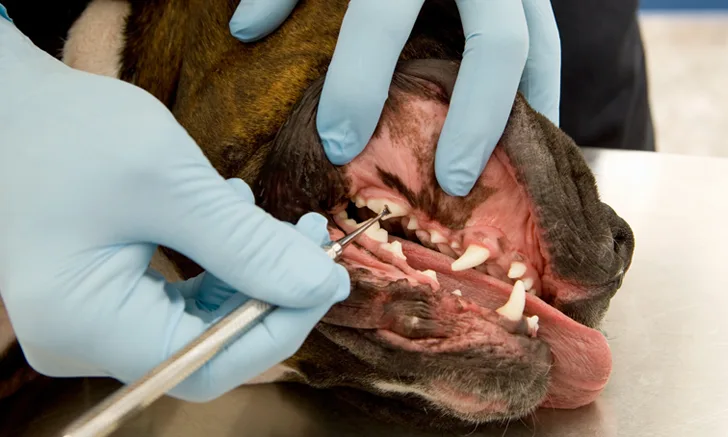Closure Options for Maxillary First Molar Extraction in Dogs
Heidi B. Lobprise, DVM, DAVDC, Cibolo Creek Veterinary Hospital, Boerne, Texas

In the Literature
Bissett L, Niemiec BA. A retrospective evaluation of secondary wound healing for extraction of the maxillary first molar in dogs. J Vet Dent. 2021;38(4):208-215. doi:10.1177/08987564221076564
The Research …
The maxillary first molar is often evaluated for extraction in cases of periodontal disease, fracture, and/or carious lesions; however, the position of this tooth in the caudal aspect of the mouth can limit access for extraction, particularly in small dogs, making it challenging to extract this tooth and retain the maxillary fourth premolar and second molar.
Using a full thickness mucoperiosteal flap for exposure and closure can be difficult in this area; the lateral width of the maxillary first molar (ie, from mesial to distal) is limited, but the buccal to palatal distance can be substantial. Creating a flap with mesial and distal incisions and release of the periosteum can cause extension into key structures (eg, parotid salivary duct). Flap creation and closure may be easier if either of the adjacent teeth are missing or should also be extracted.
This retrospective study evaluated dogs in which the maxillary first molar was extracted with the fourth premolar and second molar present. Closure included placement of a cruciate suture across the alveolus to achieve partial closure and secure the blood clot. Of 213 extraction sites, 127 had follow-up examination within a 2-week postoperative period; complications (ie, loss of suture, poor granulation tissue) were only seen at one site.
… The Takeaways
Key pearls to put into practice:
Extraction of maxillary first molars can be challenging, and complications from injury into adjacent tissues are possible. Simplifying access with an envelope flap (ie, single sulcular incision with elevation of the tissue away from the buccal bone) is often sufficient.
Simplification of closure using a cruciate suture may provide adequate support for secondary wound closure for this extraction type.
Sectioning the tooth is recommended, unless the buccal roots are completely exposed, as the roots can have curved or tortuous tips and may break off, even if the tooth appears mobile. Dental burs and elevators should be used with caution in this region.
The author also prefers to slightly elevate the palatal mucosa and, if possible, place one suture just distal to the maxillary fourth premolar to provide periodontal support to that tooth.
You are reading 2-Minute Takeaways, a research summary resource presented by Clinician’s Brief. Clinician’s Brief does not conduct primary research.